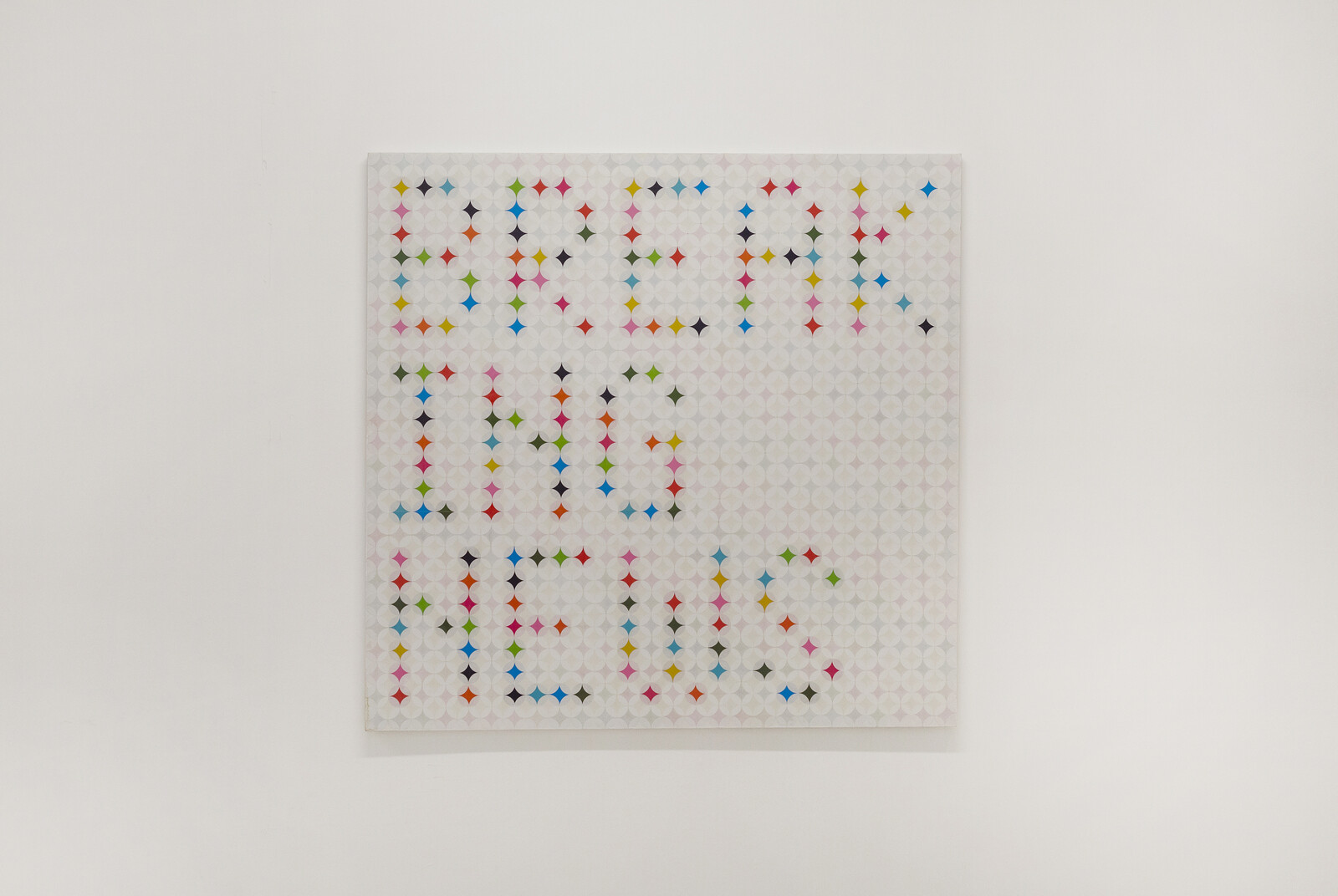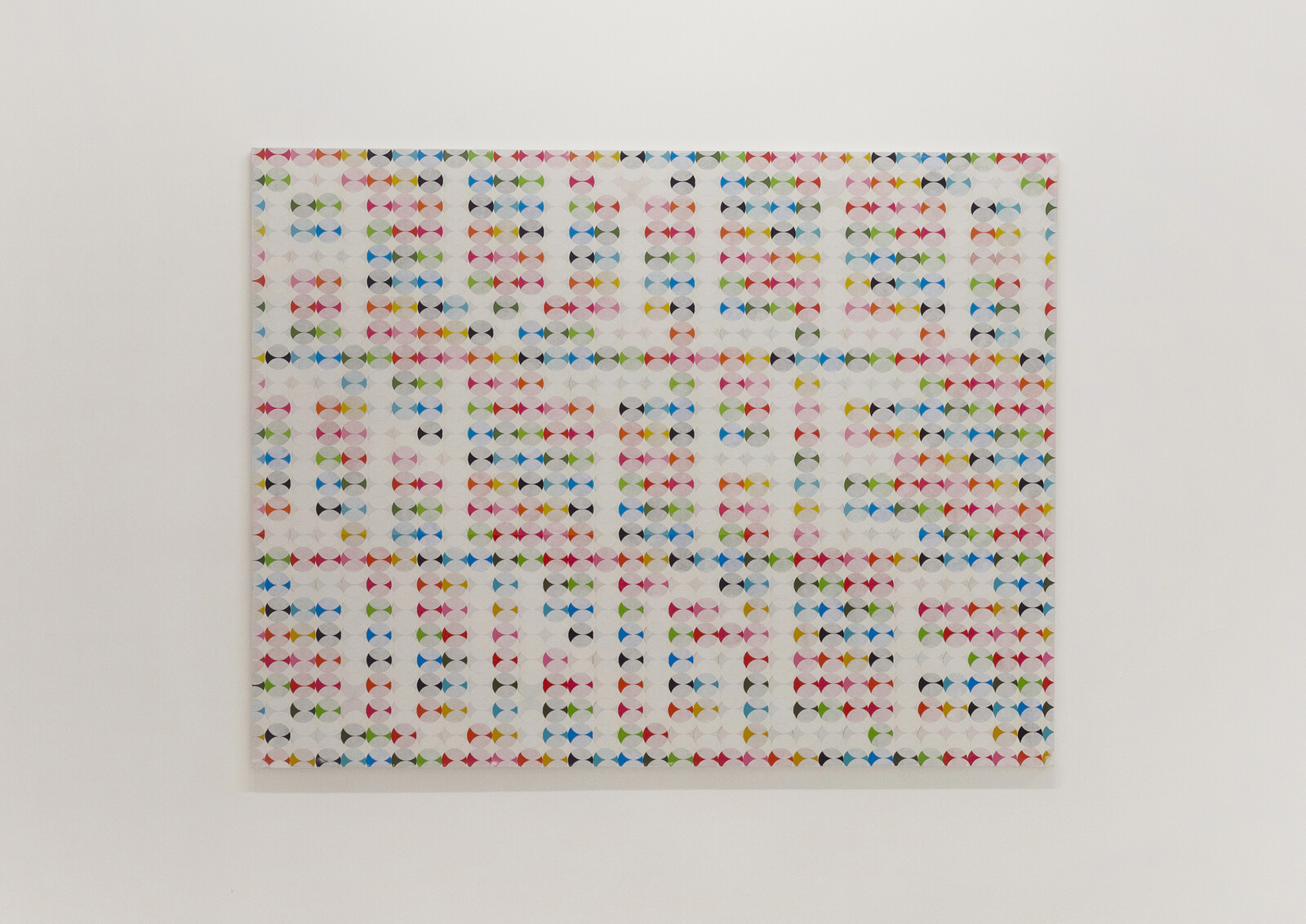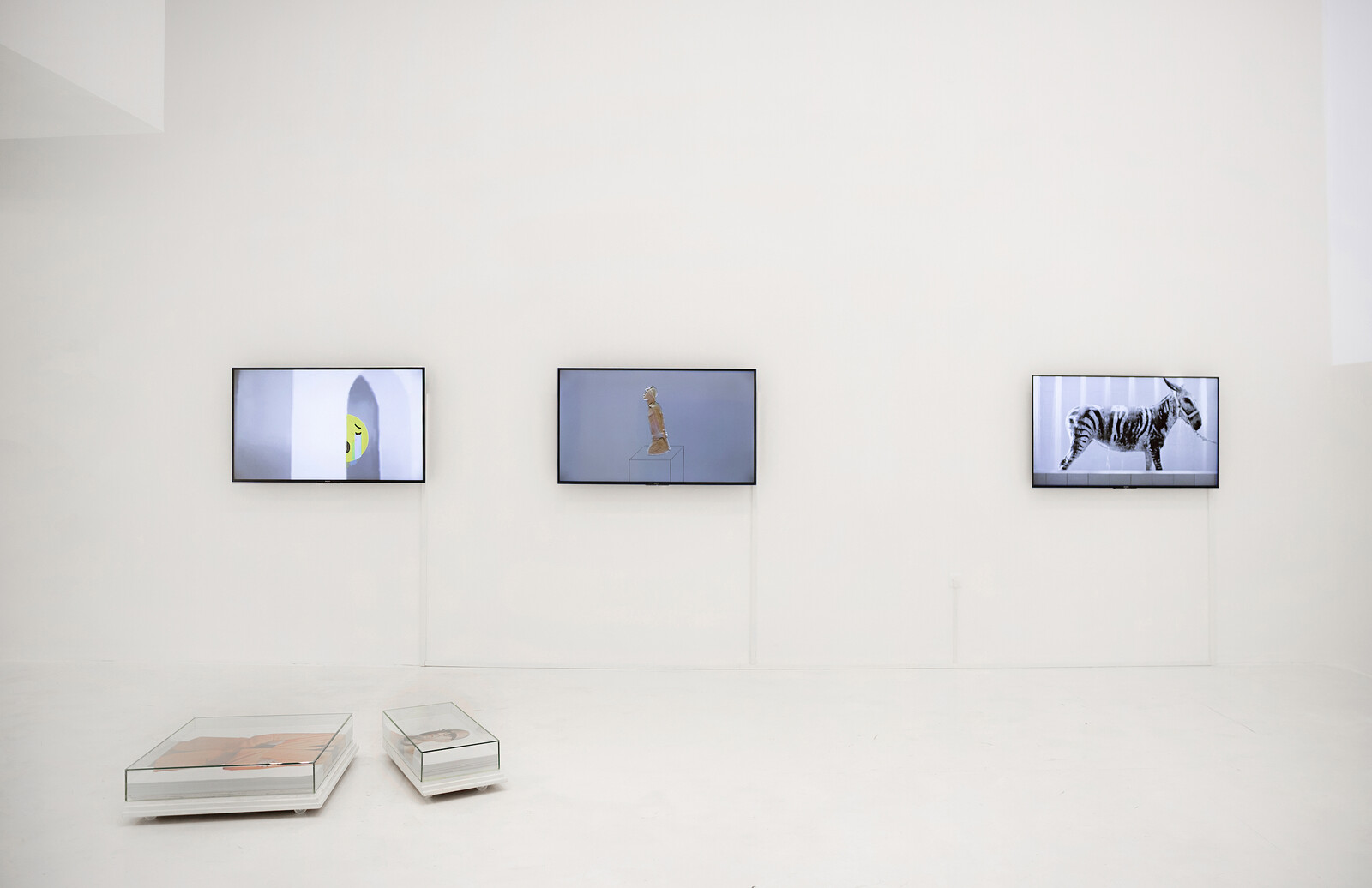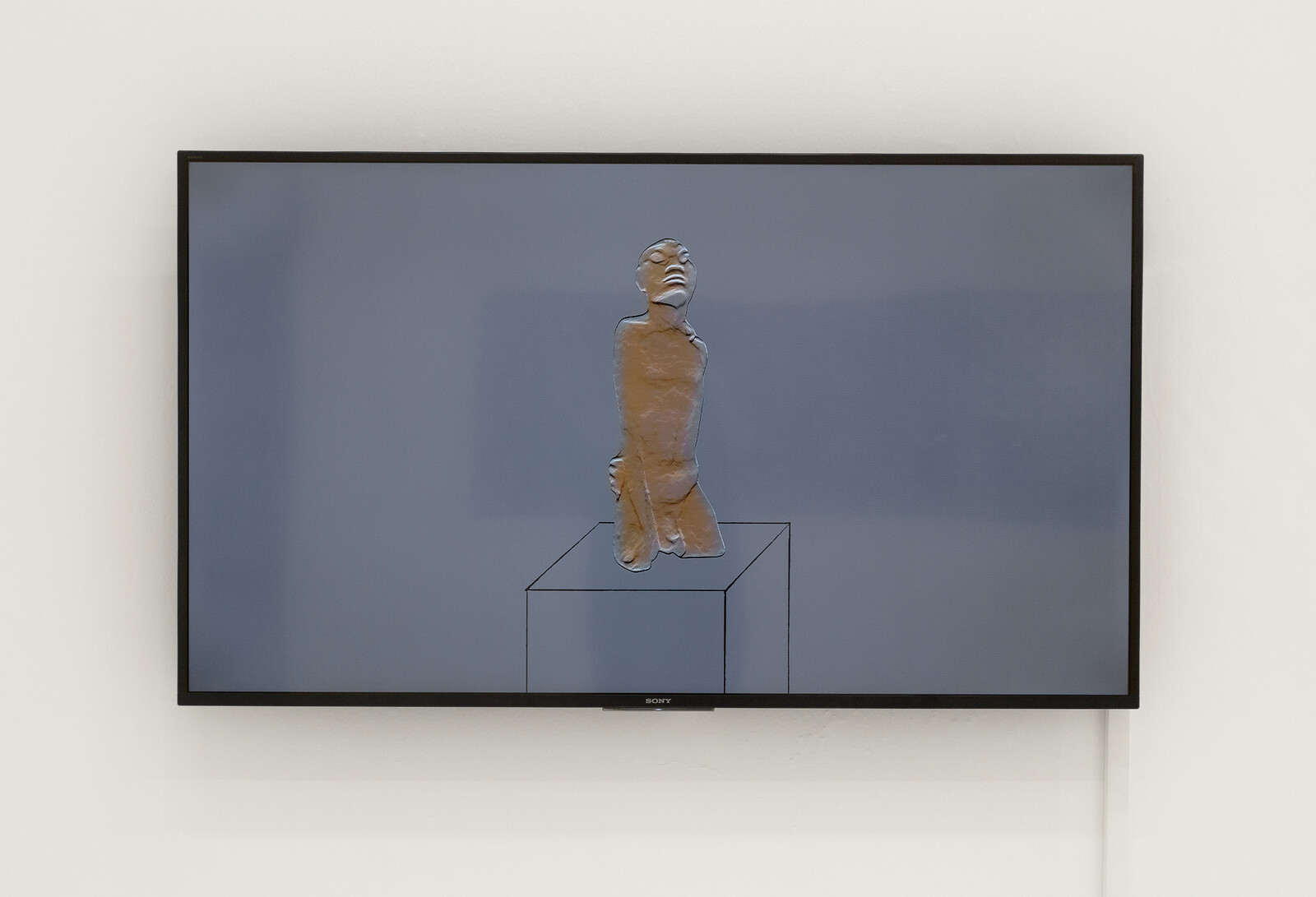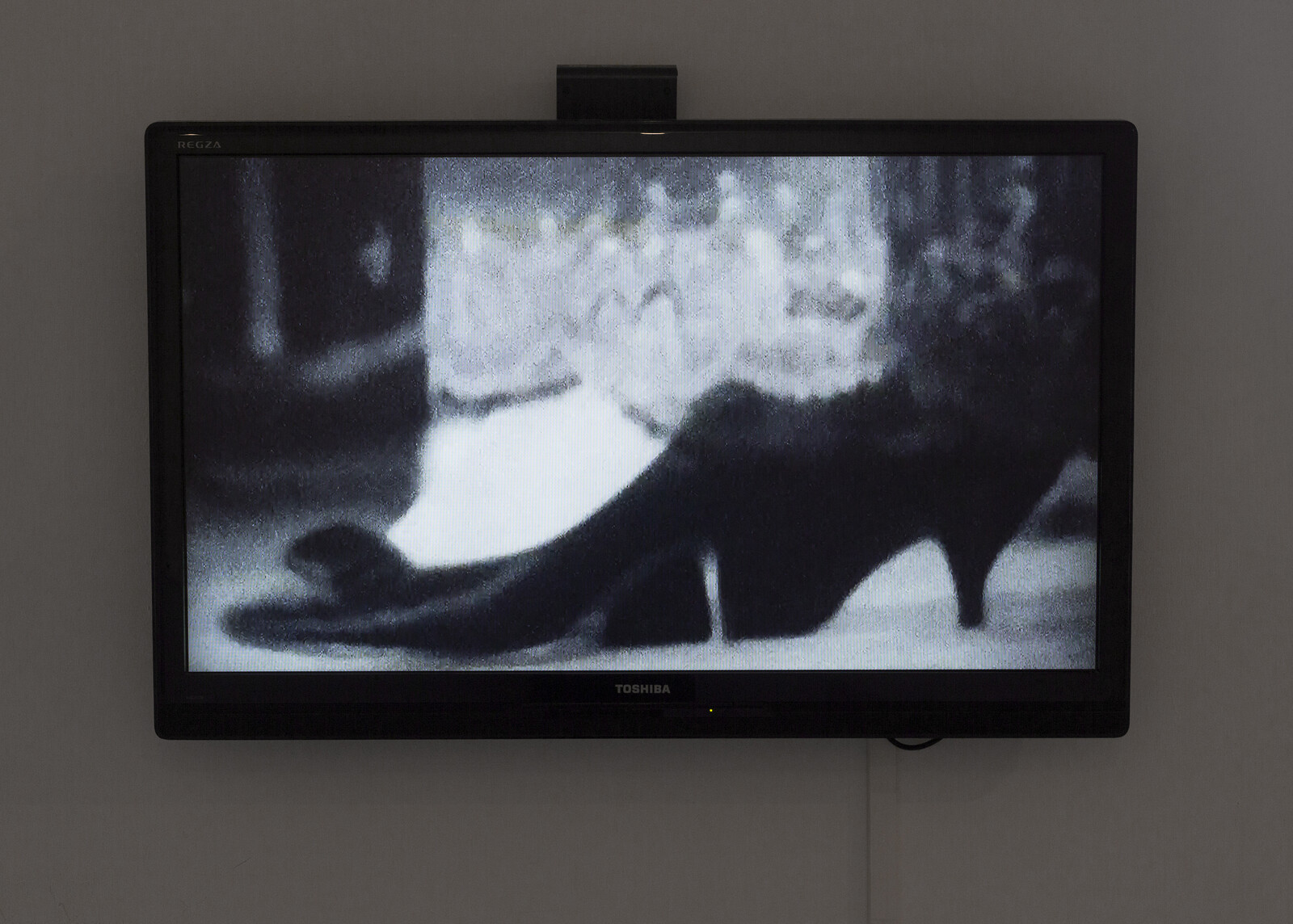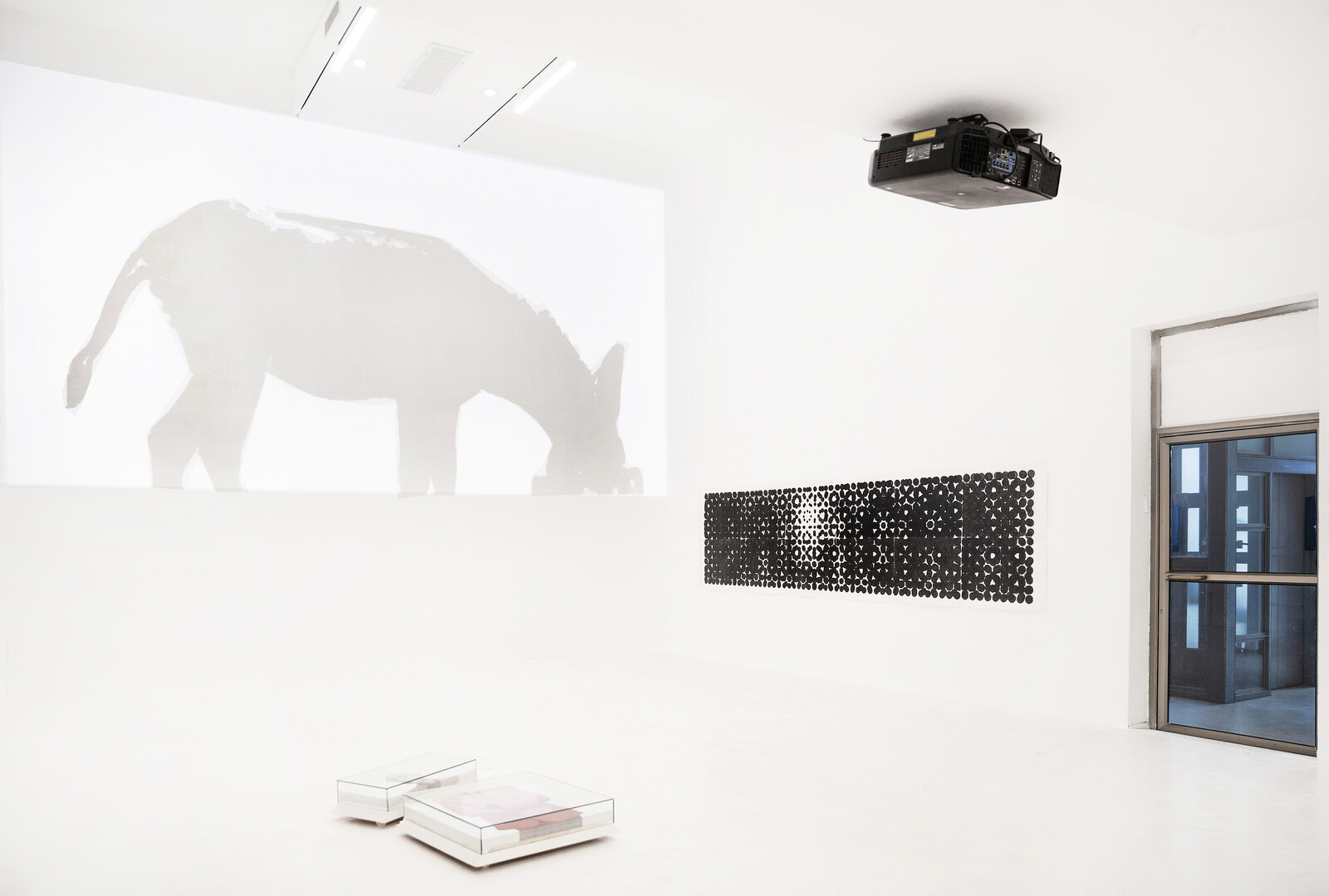The axiom that history is always written by the victors can be rejected by observing how different versions of it meet, merge, and are retold in shifting accounts that tell us as much about the present as the past. Sharif Waked’s work mediates between such versions. It does not explain or explore the histories of his homeland—Waked, born in 1964 in Nazareth to a Palestinian family who fled their hometown in 1948, is Palestinian by nationality and Israeli by citizenship—but confronts their clashing ideas of place, reminding viewers that pressing these versions of history can be an act of resistance. When the official version fails you, tell of that failure, again and again.
Waked works in several media, but his very short videos—often just a few seconds, always less than five minutes—set the tone and pace of the exhibition. By the entrance is a one-second video, Just a Moment No. 4 (Away From You) (2011), a black-and-white moving image of Egyptian singer Umm Kulthum stomping her foot while she sings. Under her elaborate dress, her high-heel goes up, then down, in an endless loop: a symbol of Middle Eastern culture in a motion associated with anxious waiting. Just a Moment work, No. 19 (Nimrod) (2018) shows Itzhak Danziger’s sculpture Nimrod (1938–39) with a mosquito circling the work. Nimrod is one of the most famous works in the history of Israeli art, a symbol of a native Hebrew (rather than exiled, Jewish) identity in the land of Israel that precedes the founding of the state in 1948. In Waked’s video, the Biblical king is introduced to the Islamic legend that a mosquito entered Nimrod’s brain and drove him mad, a divine retribution for rebelling against Abraham.
Waked’s treatment of these established symbols loads them with meaning that relates to the Israeli-Palestinian conflict. Some works repeat the aesthetics of Arabic tradition, like Tugra No. 5 (2013), a mixed-media on board repeating the famous tughra (Arabic calligraphic monogram) of the sixteenth-century ruler of the Ottoman Empire, Suleiman the Magnificent, which is now at the Metropolitan Museum of Art in New York. Waked adds to the calligraphy, which reads “eternally victorious,” the common command of Israeli soldiers, rukh min hun (“Get out!” in the Hebrew-accented Arabic that Israelis call “checkpoint Arabic”). In other works, what seems abstract, like a series of wrapping-paper dots or handmade Arabesque designs, becomes legible when photographed using a phone camera. Through a phone, dot.txt No. 4 (A Villa in the Jungle) (2015) spells out the chilling description of Israel by former Prime Minister Ehud Barak. Arabesque No. 8 (Settlers) (2020), in dark black Indian ink on paper, forms the word “settlers,” in English: a hint at the colonialist Israeli strategy of building homes for Jews as a way of asserting control over lands captured in 1967, and also at the “villa” of dot.txt No. 4, since most settlements are composed of white-picket-fence type, petit-bourgeois homes.
This mediation through technology reappears in other works on view: the drawing Search (2016) shows a Google Israel search bar and the autocomplete options for a question in Hebrew, which begins “Is there…”: “Is there a God?” “Is there a heaven?” “Is there a Palestinian nation?” “Is there a ghost in my house?” “Is there a visa requirement to Canada for Israelis?” I’m loosely translating, but as someone who has also Googled numerous times whether there is a visa requirement for Israelis somewhere (there often is), I’m taken aback. That knowledge, that proximity, makes even the simplicity of this work into a haunting statement: a cruel denial of shared space. This Israeli fantasy of the unreality of a Palestinian nation is echoed strongly in another work, Just a Moment No. 15 (Pa-Pa-Pa) (2016) in which a two-minute loop shows the letter Pey (the Hebrew P) and plays the sound “pa, pa, pa” repeatedly. It’s an allusion to one of the most infamous statements in the recent history of the conflict: right-wing MP Anat Berko, who is of Iraqi descent and spoke Arabic at home, stating in parliament that there is no Palestine or Palestinian people because there is no letter P in Arabic.
Many of Waked’s works are, like Search, quite simple and direct. One-liners abound, in numerous languages: the Palestinian Declaration of Independence, Google Translated into Yiddish (Contribute a Better Translation No. 2, 2011; No. 1, also 2011, is an archive of Palestinian struggle slogans mechanically translated and read by a text-to-speech program). A text work reading “breaking news.” A clip from the Camp David Peace Talks edited to seem like a silent film complete with the silly soundtrack (Beace Brocess No. 5, 2012, the title a jokey wink to Berko’s idiotic claim and the racist conjecture that Arabic speakers pronounce Ps as Bs).
Waked’s humor isn’t always nuanced. But it is a raw, unresolved reflection of a loaded space, like the shift between languages in the work—either a comment on the impossibility of dialogue or a desperate attempt to connect. The fact of retelling these histories, in a loop, quickly bombarding a viewer with the surreality and tragedy of the place, is a gesture in itself. It sets up a system in which even a viewer who doesn’t know what a “villa in the jungle” may mean has a hint of its emotive import in the context of the land. And then, it’s also a reminder that history is long, possibly endless, full of versions.



